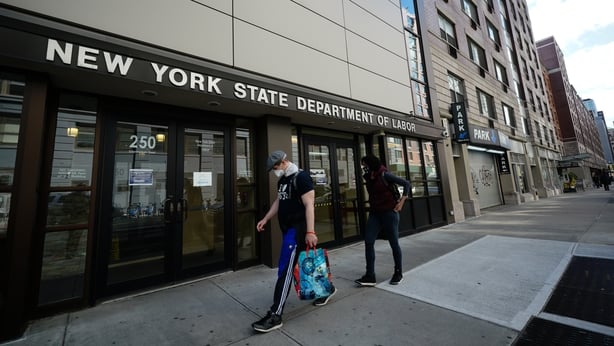The number of Americans filing new claims for unemployment benefits unexpectedly fell last week, continuing to signal persistently tight labour market conditions.
Initial claims for state unemployment benefits decreased 3,000 to a seasonally adjusted 192,000 for the week ended February 18, the Labor Department said today.
Economists polled by Reuters had forecast 200,000 claims for the latest week. Claims have been hemmed in a tight 183,000-206,000 range this year.
They have been consistently low despite high-profile layoffs in the technology sector and interest-rate sensitive industries.
Economists have long argued that the big job cuts by Twitter, Microsoft, Amazon.com and Meta, the parent of Facebook, which over-hired during the pandemic, were not representative of the overall economy.
That view is also shared by policymakers.
Minutes of the Federal Reserve's January 31 and February 1 policy meeting last night showed "several participants noted that recent reductions in the workforces of some large technology businesses followed much larger increases over the previous few years and judged that these reductions did not appear to reflect widespread weakness in the demand for labour."
The Fed has raised its policy rate by 450 basis points since last March from near zero to a 4.5%-4.75% range, with the bulk of the increases between May and December.
Though two additional rate hikes of 25 basis points are expected in March and May, financial markets are betting on another increase in June because of sustained labour market strength.
The claims data covered the week during which the government surveyed business establishments for the nonfarm payrolls component of February's employment report. Claims were unchanged between the January and February survey weeks.

Economists expect strong employment growth in February, though the pace probably slowed from last month's eye-popping 517,000 jobs.
Data next week on the number of people receiving benefits after an initial week of aid will offer more light on the state of the labour market in February.
The so-called continuing claims, a proxy for hiring, dropped 37,000 to 1.654 million during the week ending February 11, the claims report also showed. Though continuing claims have been elevated in recent weeks, they remain very low by historical standards amid millions of job openings.
There were 1.9 job openings for every unemployed person in December, data showed this month. The unemployment rate at 3.4% in January was the lowest in more than 53 years.
Goldman Sachs said this week it expected the jobless rate to rise to 3.6% by the end of this year and stay there at the end of 2024.
Strong wage growth generated by the tight labor market is helping to underpin consumer spending and the overall economy.
A separate report from the Commerce Department today confirmed that the economy grew solidly in the fourth quarter, though much of the increase in output came from unsold goods at businesses.
US gross domestic product increased at a revised 2.7% annualised rate last quarter, the government said in its second estimate of fourth-quarter GDP. That was revised down from the 2.9% pace reported last month.
Economists had expected GDP growth to be unrevised. The robust second-half growth erased the 1.1% contraction in the first six months of the year.
Though activity slowed in the last two months of 2022, the economy appears to have regained speed at the start of the new year.
US retail sales growth surged in January and production at factories rebounded as did activity in the services industry. The housing market slump looks to be nearing a bottom, with sales of previously owned homes falling moderately last month. But monthly inflation accelerated in January.

